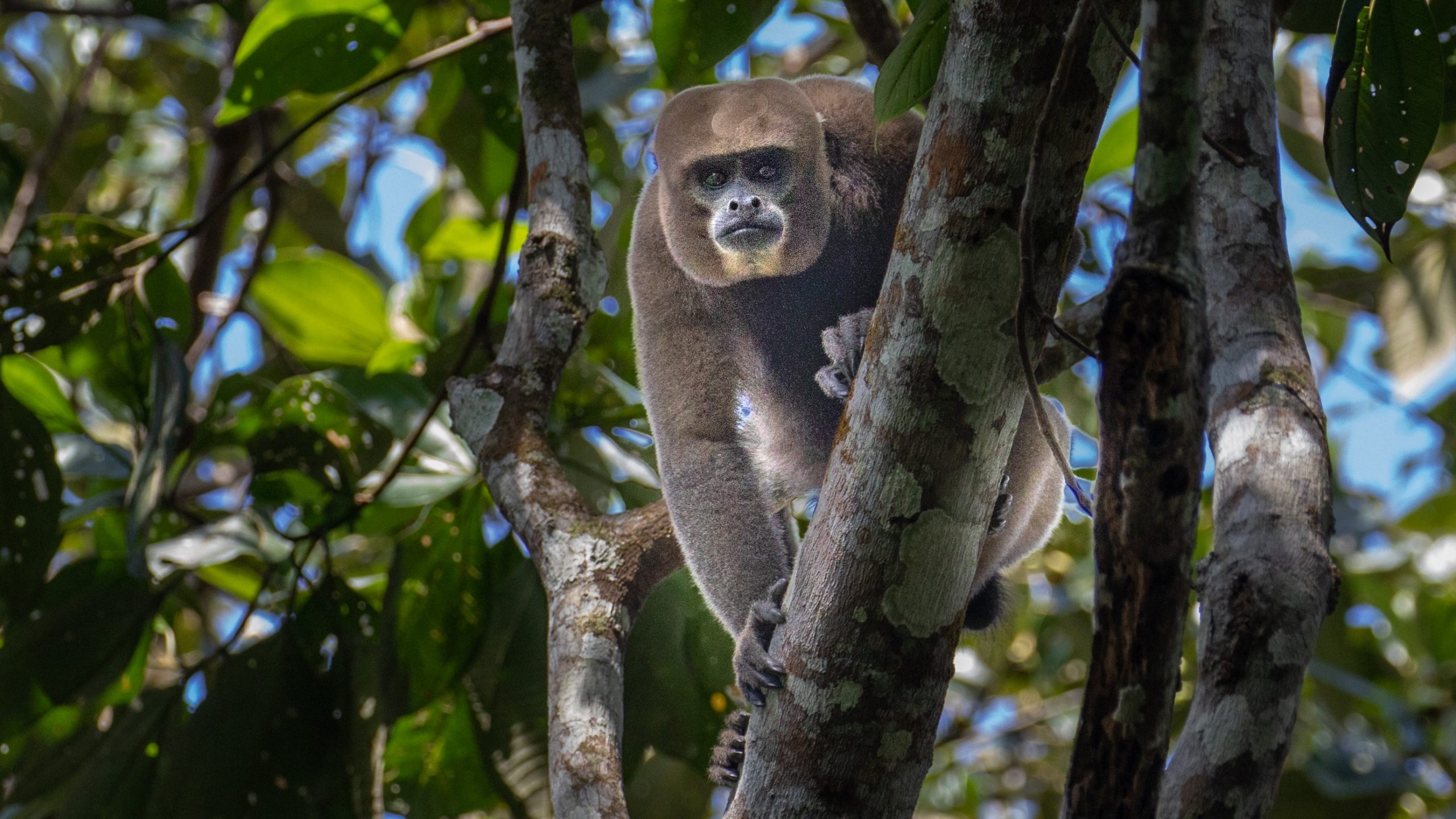
Colombia
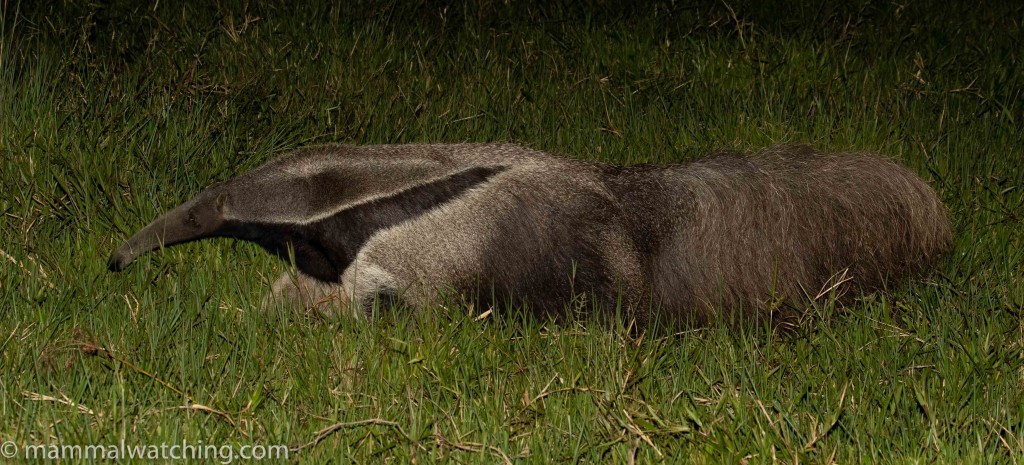
Giant Anteater, Myrmecophaga tridactyla near Villavincencio, 2020
In August 2006 I had to visit Colombia for work. Unfortunately I had precisely four days to arrange the trip and so couldn’t do justice to Colombia’s mammal watching potential. But I saw enough to know that I had to return soon, which I did three times – all again for work – in October 2006, April 2007 and April 2008. I returned in January 2020 for 11 days of dedicated and fabulous mammal watching.
Colombia is about as close to paradise as I can imagine. It is ridiculously diverse with about 460 species of mammals. I think only Brazil has more, but Brazil is about seven times the size. The biodiversity is driven by the geographic diversity: Colombia has serious mountains, grassland plains, rainforest, desert and coastal forest. I can’t imagine anyone ever has an excuse to be bored. Add to this some of the friendliest, happiest people I’ve ever met, a low cost of living, delicious food and you begin to get the picture. And I haven’t even mentioned the women.
The country has a reputation for being dangerous. Things had improved a lot in the years before I visited but there seems little doubt that large swathes of the remoter areas were pretty risky in 2006-8, especially at night. But the ‘safe’ bits of Colombia seemed very safe. There was a particularly strong military presence visible during my first weekend there in 2006 because the President was being sworn in for a second term in office. By 2020 just about all of the country seems safe tor travel though you would be well advised to use local guides in some areas, especially after dark.
Amazonas Department
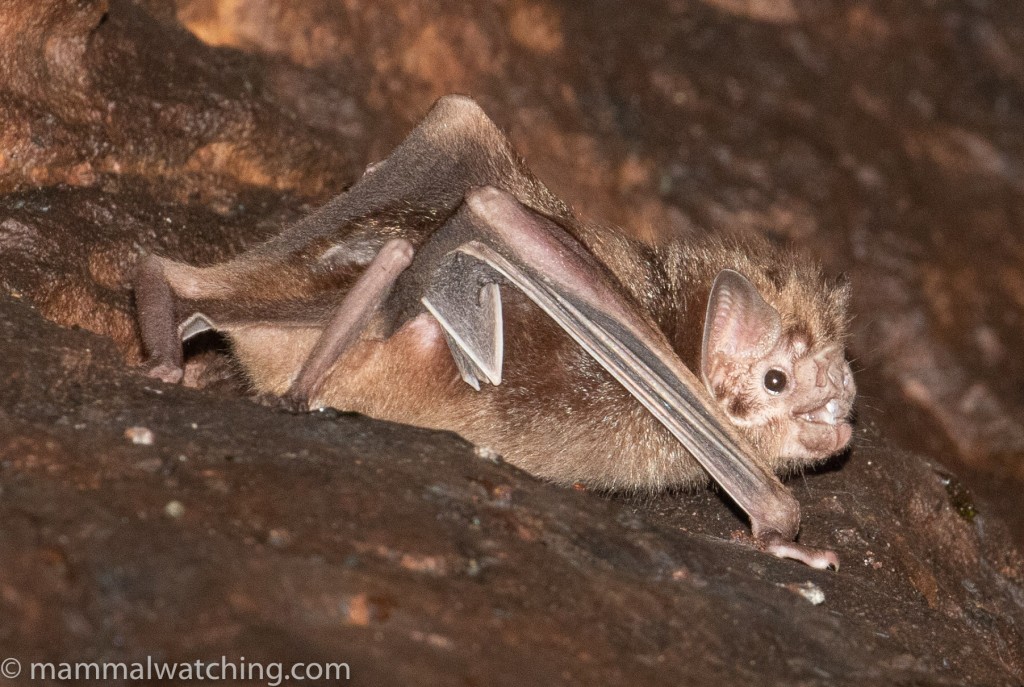
Common Vampire Bat, Desmodus rotundus
Leticia: one night in October 2006.
Leticia is the gateway to the Colombian Amazon. In October 2006 I visited and headed straight out of town by river to Brazil and the Palmari lodge. But in Leticia itself I saw Botos (Pink River Dolphins) as well as some Black-mantled Tamarins (Saguinus nigricollis) in the forest at around the 11km milepost out of town. The locals call them Bebe Leches because their white moustaches give them a look like babies that have been drinking milk.
Agoutis and Pacas are also in the same area, though animals would be easier to see further out of town, either in the Palmari Reserve area or deeper into Colombia at the Parque Nacional Amacayacu. Puerto Narino, about 90km up river from Leticia, is home to a few Amazonian Manatees apparently, though they aren’t easy to see.
Antioquia Department
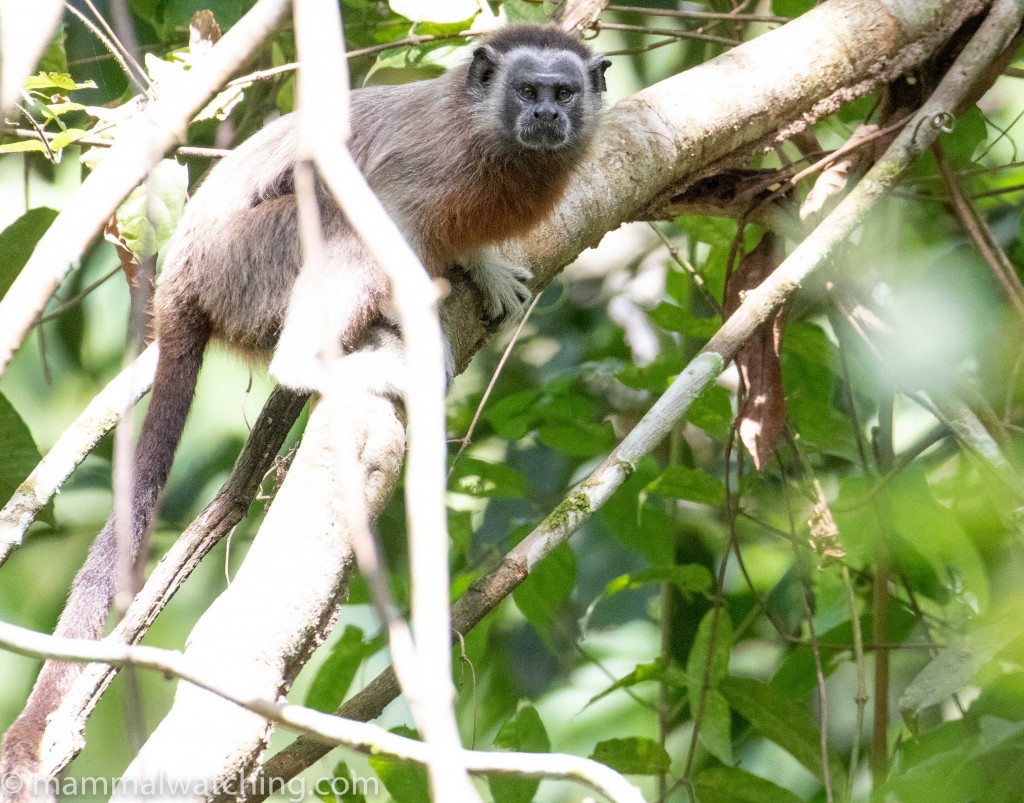
Silvery-brown Bare-faced Tamarin, Saguinus leucopus
In January 2020 we spent a morning near the Rio Claro Nature Reserve, a couple of hours from Medellin, and saw Varied White-fronted Capuchins and Silvery-brown Bare-faced Tamarins.
Bolivar Department (Cartagena)
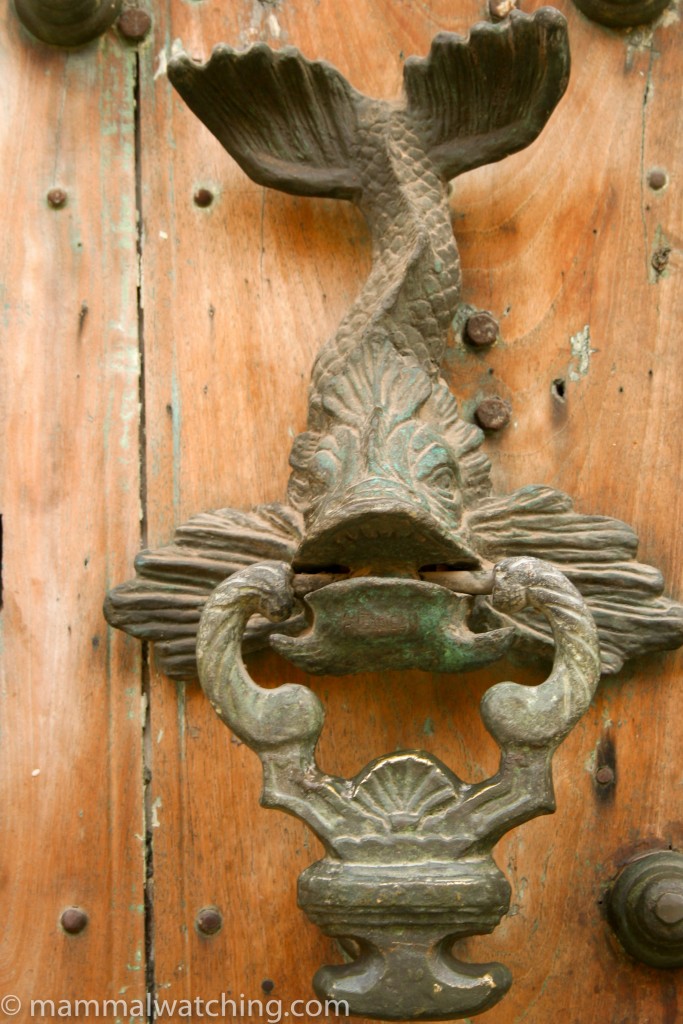
I have had the very good fortune to visit Cartagena, on the Caribbean coast, three times for work in 2006 and 07. I saw a few microbats flying around the city, as well as some smallish mega bats, and a large rat near the Caribe Hotel. But there didn’t seem to be much else in the way of mammals around though there are some good parks nearby which now seem safe to visit. That said, Cartagena was spellbinding. One of only a very very few places I’d choose to visit for reasons other than the wildlife.
Boyacá Department
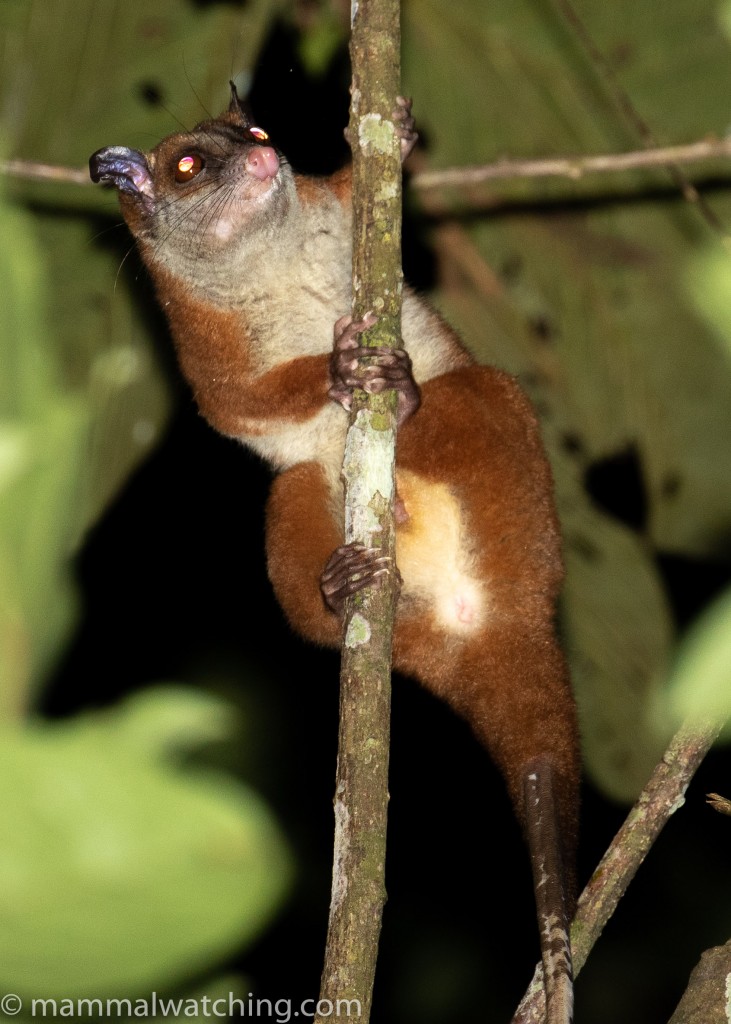
Western (Brown-eared) Woolly Opossum, Caluromys lanatus. El Paujil, 2020.
El Paujil Reserve: two nights in January 2020
Two nights in this reserve in January 2020 were excellent. We had Variegated (Brown) Spider Monkeys, Grey-handed Night Monkeys, Varied Capuchins, Western (Brown-eared) Woolly Opossums and a Robinson’s Mouse Opossum. We also saw Miller’s Long-tongued Bats, a Lesser White-lined Bat and a Riparian Myotis, a Colombian Soft-furred Spiny Rat, Santander Dwarf Squirrel plus Allen’s Olingo and a Crab-eating Fox.
Santa Sofia: one night in 2007
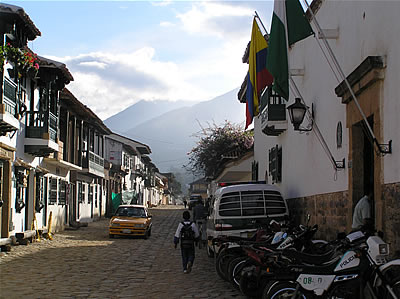
Villa de Leyva
In April 2007 Pocho and I spent a few hours exploring a cave near the picturesque town of Santa Sofia, in the mountains three hours north of Bogota. We stayed in the equally picturesque Villa de Leyva.
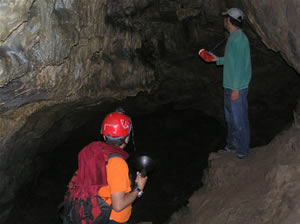
The bat cave
Access to the caves was pretty easy: we took a slippery climb up the hill side, but then it was straightforward to get into the cave itself.
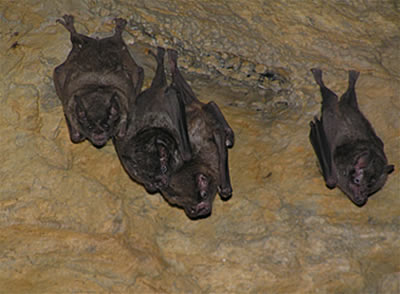
Geoffroy’s Hairy Legged Bat, Anoura geoffroyi
There were many bats inside and there may have been more than one species. But the only species I managed to catch and identfy was a Geoffroy’s Hairy-legged Bat (Anoura geoffroyi) aka Geoffroy’s Tailless Bat.
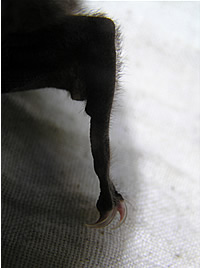
The hairy legs of a Geoffroy’s Hairy Legged Bat
Pocho can take you there.
Cundinamarca Department (Bogota)
Parque Chicaque: one night in October 2006
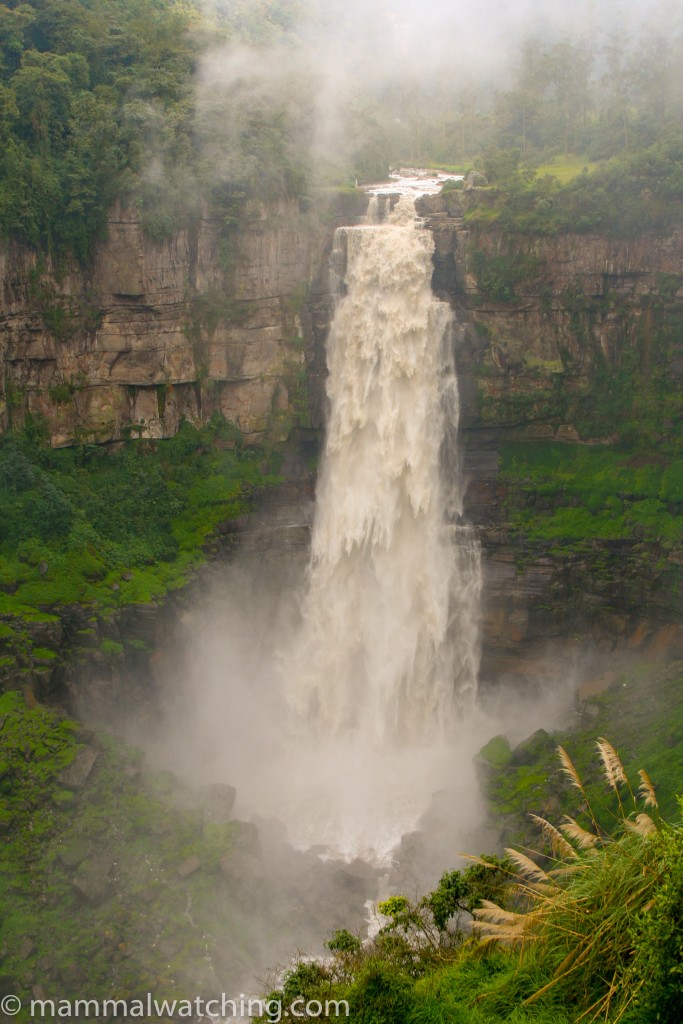
Falls on the Rio Bogota, near Parque Chicaque
In October 2006 I arranged a short overnight trip to Chicaque National Park, about an hour from Bogota’s El Dorado airport. Once again Pocho organised everything.
The park is a little higher than Bogota, up at around 2,200m, and it is near the waterfalls pictured above on the Bogota River. It is a couple of kilometres steep walk down to the Park lodge and campsite, which have a glorious view over the valley. There are a heap of birds there but apparently not many mammals. Though the park’s website notes that Spectacled Bear was recorded there in the 1990s, and sloths and other nice things have been seen there too, it seems that there isn’t a great chance of seeing much other than squirrels during the day. I saw a small Andean Squirrel (Sciurus pucheranii), and Pocho saw what was probably a Neotropical Red Squirrel.
My spotlight was buggered and so was I, so I didn’t go spotlighting that night. The steep walk back to the car, with the unused spotlight battery and 15 unused small mammal traps was particularly painful.
Guaviare Deparment
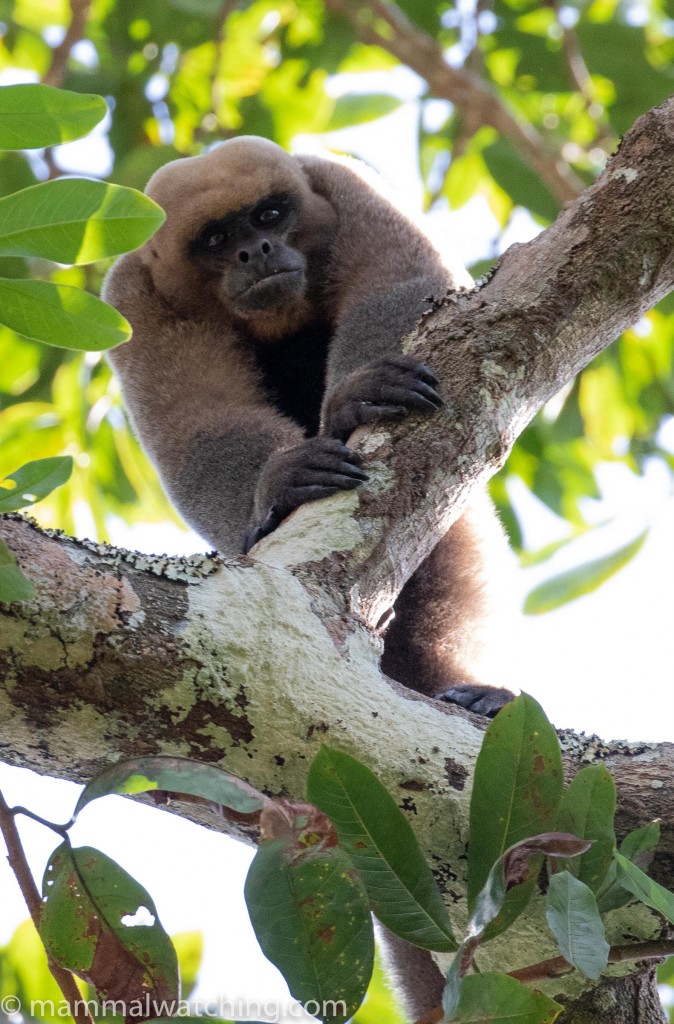
Common Woolly Monkey, Lagothrix lagothricha
Cerro Azul: two nights in January 2020
I spent two nights here in January 2020. We saw Mottle-faced Tamarins, Black (Collared) Titis, Golden-backed Uakari, Common Woolly Monkeys, Colombian Red Howlers, Common Squirrel Monkeys, Brown (Tufted) Capuchins and lots of bats in a cave at Cerro Azul: Lesser and Greater Dog-like Bats, Lesser Spear-nosed Bat, Silky Short-tailed Bat, Great Fruit-eating Bat, Striped Hairy-nosed Bat and Common Vampire Bat.
Magdalena Department
Parque Tayrona: one night in April 2008
Parqye Tayrona is a national park near the town of Santa Marta in Colombia’s north. It is popular with Colombians and foreign backpackers for its beaches. But though most of the guide books mention the wildlife in the surrounding forest, most also said that the mammals remain deep in the forest and are seldom seen. Not true.
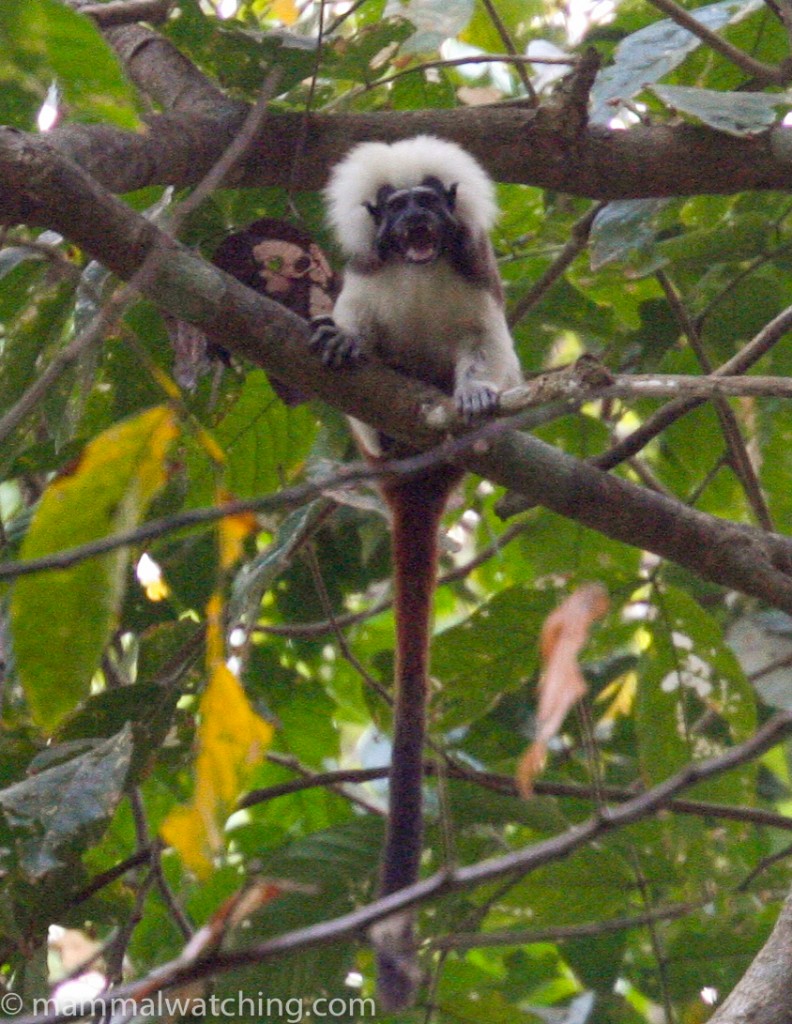
Cotton-top Tamarin, Saguinus oedipus. Parque Tayrona
There are several places to stay and I spent a night at Arrecifes, which was made up of a campground, restaurant and a handful of cabanas. Arrecifes is a 3 km walk through the forest from the park HQ.
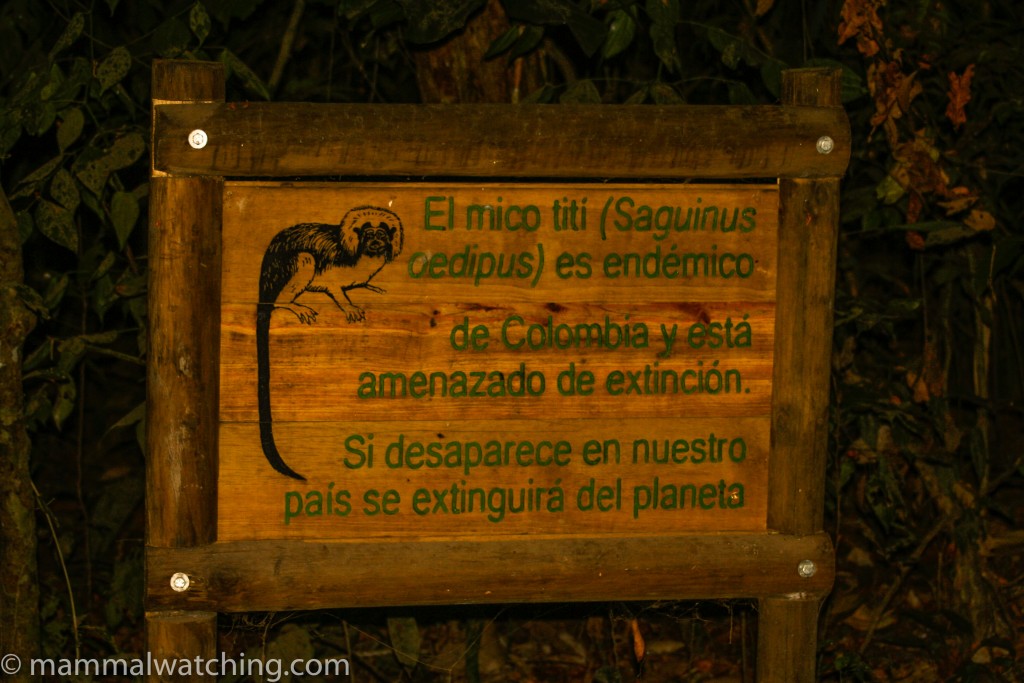
I was only there for 24 hours and focused my mammal watching on the trail from the HQ to Arrecifes. During the day the trail was a busy procession of people on foot and horseback. But I had the path to myself during a dawn walk.
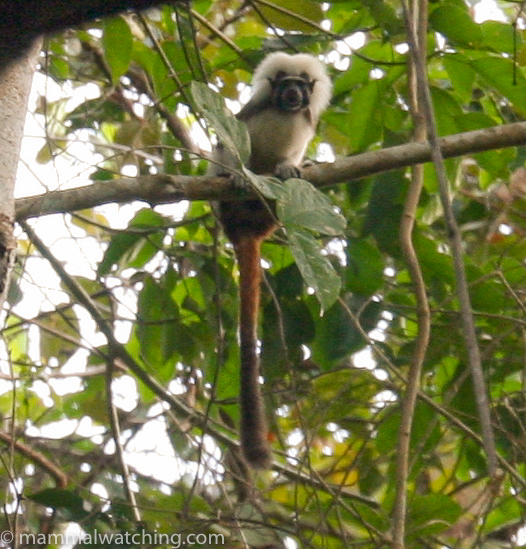
Cotton-top Tamarin, Saguinus oedipus
There are several species of monkey in the park, the best of which are the endemic Cotton-top Tamarins. The latest thinking is that, though Santa Marta is close to the species’ historical range, they were in fact introduced to the forest. A small group was active about 500 metres along the trail from Arrecifes at 6 a.m. and there were more late that afternoon even closer to the campsite. Gorgeous little things.
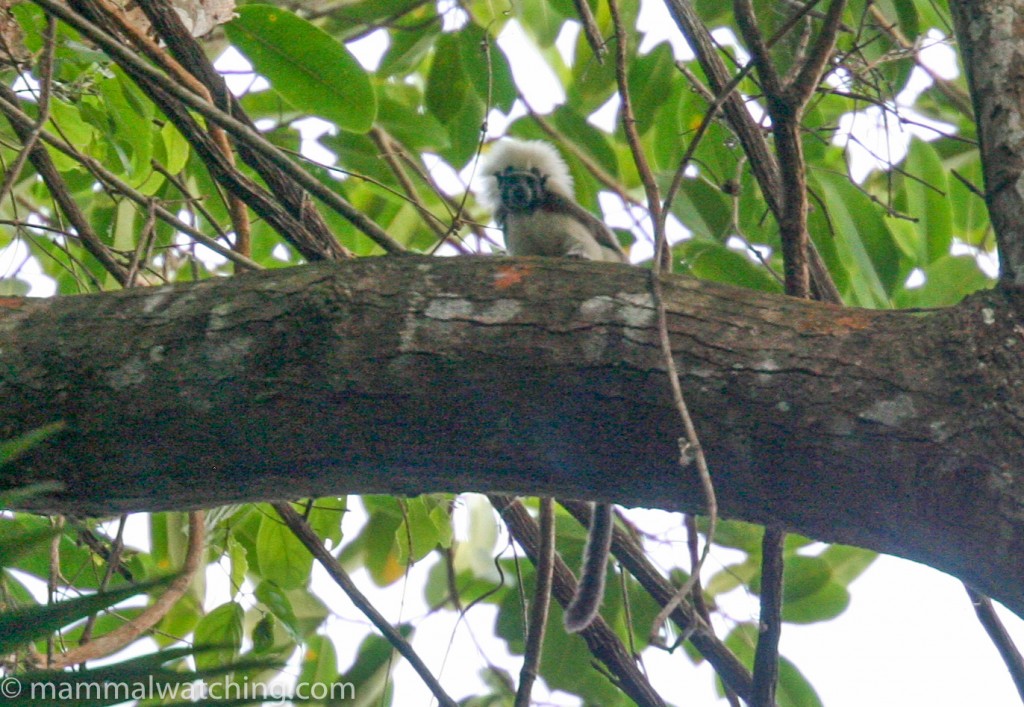
Cotton-top Tamarin, Saguinus oedipus
Around the campground and in the forest, pairs of Red-tailed Squirrels were very common and vocal. I saw several Central American Agoutis along the trail.
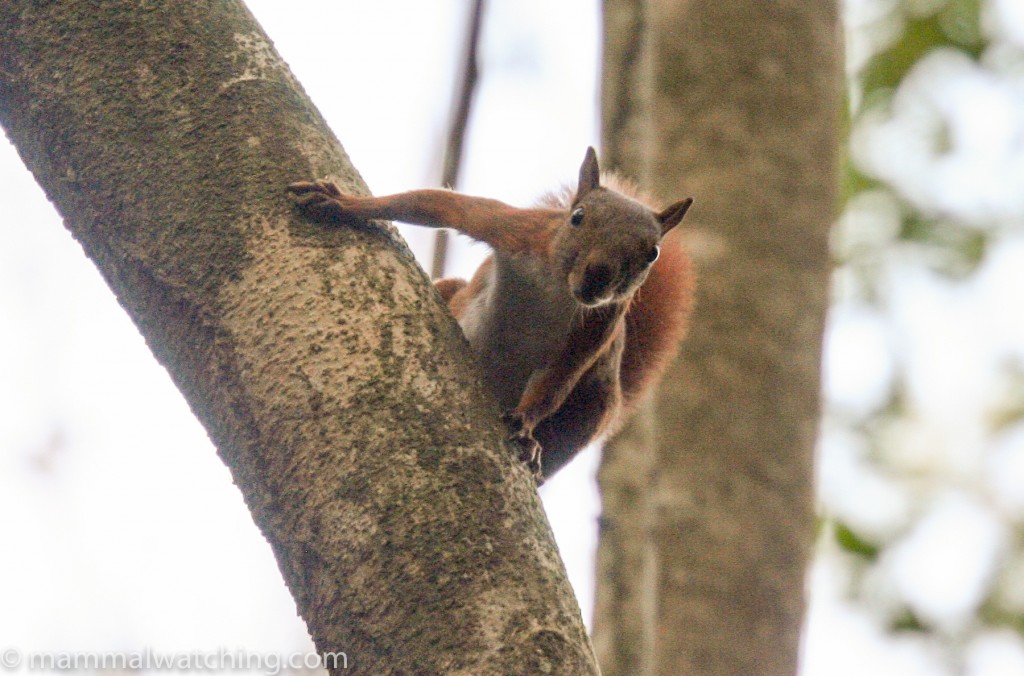
Red-tailed Squirrel, Sciurus granatensis
With more time I was told that the 2.5 hour walk from Arrecifes to the community of Pueblito was good for monkey spotting. White-fronted Capuchins and Red Howlers were quite common it seems, especially near Pueblito itself.
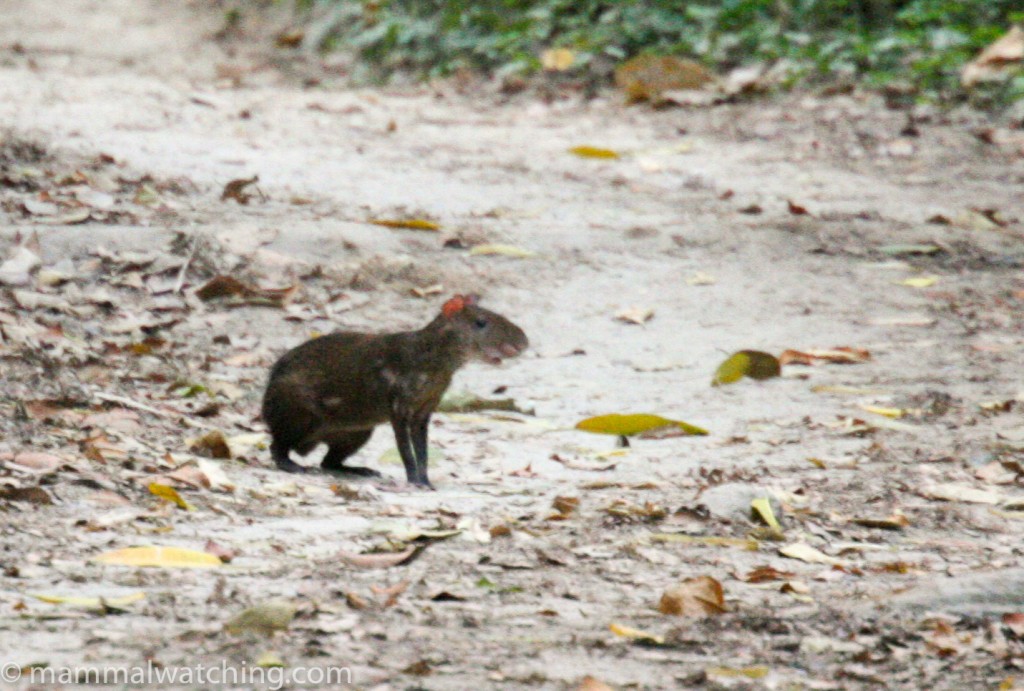
Central American Agouti, Dasyprocta punctata
As I was driving out of the park after dark I saw a Crab-eating Fox at the side of the road near the main HQ.
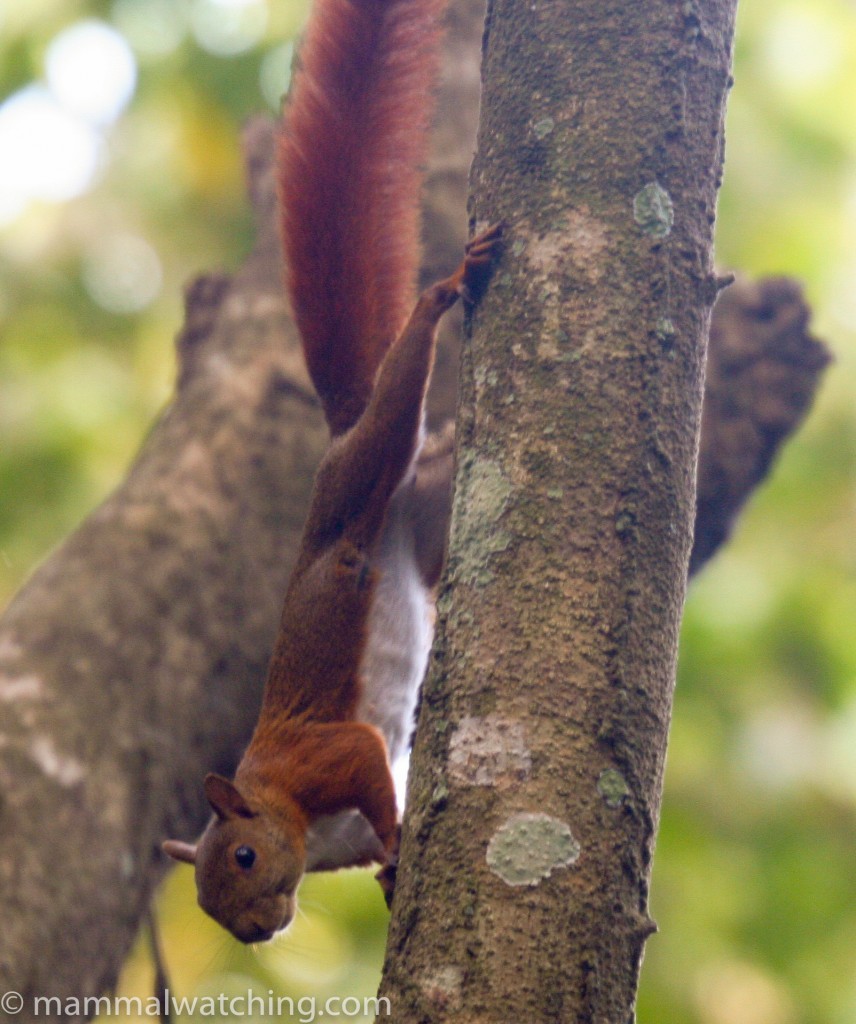
Red-tailed Squirrel, Sciurus granatensis
Meta Department
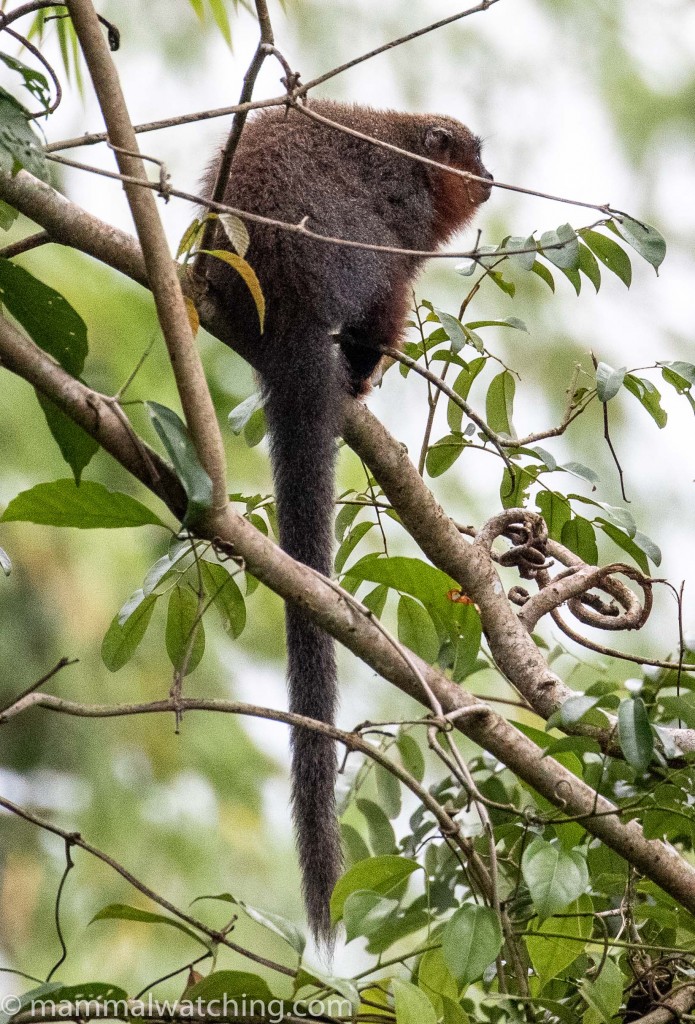
Ornate Titi, Callicebus ornatus near Villavincencio in 2020
Los Llanos: two nights in August 2006
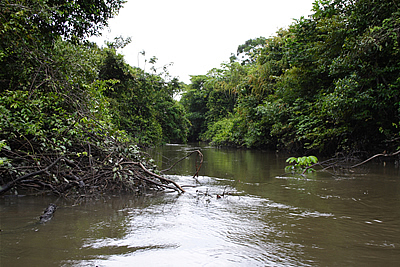
Rio Meta tributary
In August 2006, for my first visit, I had less than 72 hours to go chasing mammals and decided to head out from Bogota to ‘Los Llanos’ (the plains): an ecosystem that occupies a good portion of the centre and north of the country and comprises a mix of grassland, swamp and forest that drains into the Orinoco. It was fairly close, and apparently safe.
I stumbled upon a tour company called De Una Colombia. They spoke good English and Thomas Doyer there, a Dutchman, tried hard to help me organise something, despite the three days notice. He was able to arrange for Pocho (real name Carlos Alfonso Avellaneda), a friend of his, to be my guide and driver. Pocho already had plans for the weekend so he wanted to bring his girlfriend Jessica along. And Carlos speaks about as much English as I speak Spanish (14 words), so he also bought along Juan, a mate of his who spoke excellent English. They were good company and the next three days felt more like a road trip with my mates than an organised tour. Carlos is a licensed tour operator and knows a lot about Colombia and its fauna. He and Jessica had recently begun producing a Colombian magazine called Retorno that was a sort of National Geographic kind of a thing and very nice. They were well clued up about the wildlife and were willing to go without sleep until I found it. I traveled again with them twice on subsequent visits.
We drove eight hours from Bogota, though Villavincencio, then Puerto Lopez and on to Puerto Gaitan, on the banks of the Rio Meta. We arrived on dusk. The bit of Bogota I’d stayed in – the Zona Rosa – could have been L.A. or Miami, with its sparkling malls, populated with Diesel and Tommy Hilfiger shops; its Starbucks and sushi bars. But Puerto Gaitan was more what I’d been expecting … with its pavement snack bars, and dirt streets that gravitated towards the boat ramp. Although there was apparently a reasonable amount of wildlife around, the mammal watching was frustrating. I’d wanted to go out by boat to spotlight that evening, but none of the locals could be persuaded to take me: they were nervous about being shot at by terroristas. Perhaps not unreasonable. It also sounded like spotlighting from the road could be a bit dodgy so we only traveled a kilometre or so outside town, during which time we saw several caimans but no mammals.
We’d arranged for a boat to take us out at 6 a.m. the next morning; apparently there was no problem with traveling in the daylight. The boat didn’t show up, though the owner was sure it would so we wasted an hour waiting. By 8 a.m. we had found another guy who could take us out and we headed down river for about 25 miles, travelling at 30 knots into driving rain wasn’t the best, before slowing down and travelling into the more wildlife rich habitat of narrow creeks and oxbow lakes.
This was my first time in the Neotropics so I was in search of Capybara. Though the area seemed quite undisturbed the animals were decidedly skittish and I guess there was a good deal of hunting pressure. We found heaps of fresh shit around the grassy marshy edges of creeks, and heard splashes and hippo-like gruntings of the animals themselves. But I couldn’t see one. On the way back we stopped to see Pink River Dolphins (Botos). I had thought these would be easy to see, figuring it was just a matter of stopping for a few minutes at the confluence of the Meta and another river, about 5 miles downstream from Puerto Gaitan. As a result I hadn’t factored in much time for the stop. When we got there the skipper said the dolphins were only common in the dry season. August isn’t the dry season. We banged the side of the boat to attract them without success before circling around the confluence of the rivers. At one point we hit a patch of real murky water, which is apparently favoured by the dolphins because it is often rich in fish. I heard an animal surface and blow behind the boat. Carlos saw it. I didn’t. We spent another half an hour hanging around in case it resurfaced. It didn’t. We had to leave. The pain of it.
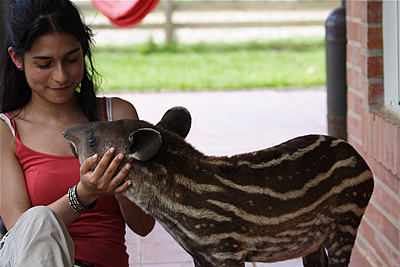
Jessica and a Tapir (Jessica is on the left)
Back in Puerto Gaitan we visited the local wildlife carer’s house. Well worth it because we could get up close and personal with Pacas and Capybaras, a Peccary, a baby Tapir and a Giant Anteater, to name but a few. All the animals had been found locally and were being rehabilitated. The Giant Anteater was most entertaining, doing a crazy defensive dance thing whenever we got near: it would balance on three legs, slope to one side and raise its front foot in the air and ineffectually claw in our general direction. The animal may have been drinking because about 10 seconds after it lifted its foot it would invariably begin spinning donuts and then fall down flat. I can identify with this behaviour.
The four hour bumpy drive back to Puerto Lopez was uneventful until I stuck a spotlight out of the window about 30 kms before Puerto Lopez. Within 10 kms we saw a Giant Anteater foraging in a paddock near to a farmhouse. Great views for about 10 minutes. It was much bigger than the little bloke we’d seen at the wildlife carer’s place and this was the species I wanted to see more than any other in South America. Too cool!
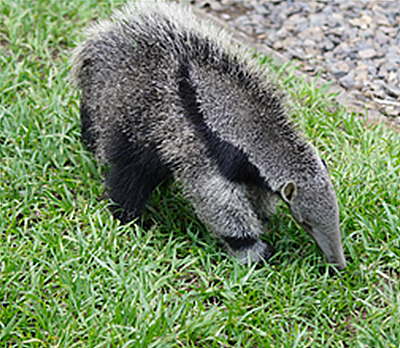
Giant Anteater at the Puerto Gaitan Wildlife Sanctuary
Several people had told me that I’d be unlikely to find many mammals in the Puerto Lopez area. But there was some decent looking gallery forest along the river and I felt sure there would be some monkeys around at least.
Early the next morning we asked a few of the locals and were given directions to a spot along the river about 10 km east of town, back towards Puerto Gaitan. When heading out of Lopez take the left turn just past the monument that marks Colombia’s geographic centre. The road leads towards the river and some farms including Ricardo’s Finca. This, so the school kids said, was the place to see monkeys.
Ricardo was very welcoming and let us wander through his forest. Within minutes we heard several groups of Red Howler Monkeys roaring from less than a kilometre away. About 15 minutes later, in the middle of the forest and near the homestead, I saw a Red Howler and baby moving through the canopy, closely followed by a Squirrel Monkey. A few minutes later we found a group of White-Fronted Capuchins and then what was either a Northern or Southern Amazon Red Squirrel. Four species (all new for me) in 20 minutes.
If the security had been better I’d be tempted to head deeper into Los Llanos to go looking for things like tapirs, cats, otters and armadillos. A park called Macarena, on the border between Los Llanos and the Amazon, sounds a fabulous place for seeing wildlife, but the area was reputed to be lawless and unsafe.
Villavincencio: one night in January 2020
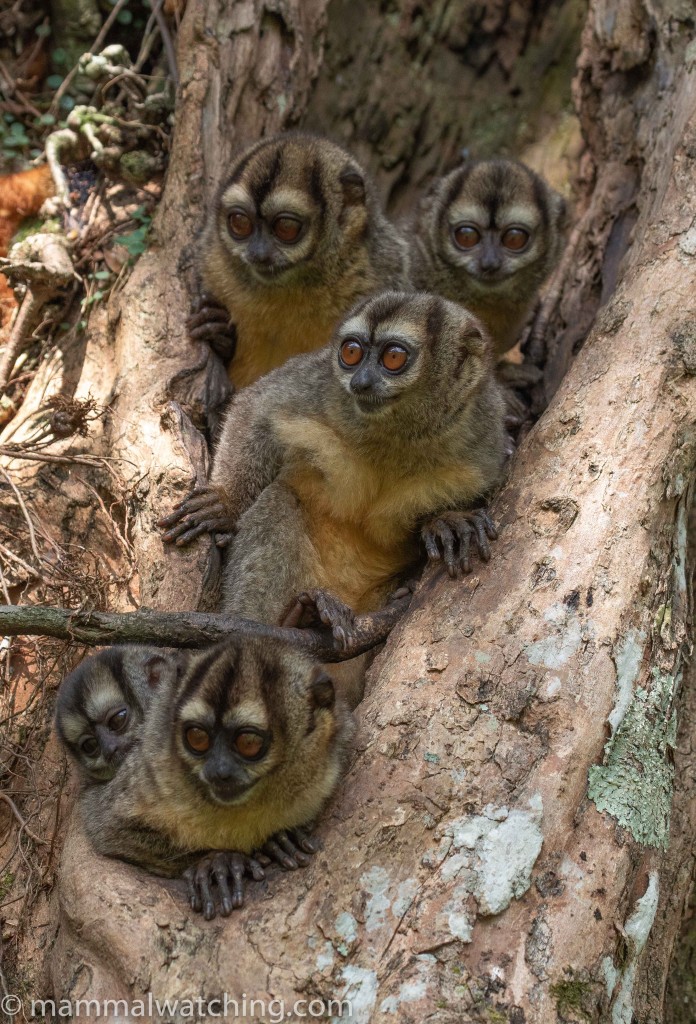
Brumback’s Night Monkeys, Aotus brumbacki
I returned to the same department in January 2020 for a night. We saw Ornate Titi, Colombian Squirrel Monkey, Amazonian Long-tailed Porcupine, Common Opossum, Brumback’s Night Monkeys, a Giant Anteater and O’Connell’s Spiny Rat.
Putumayo Department
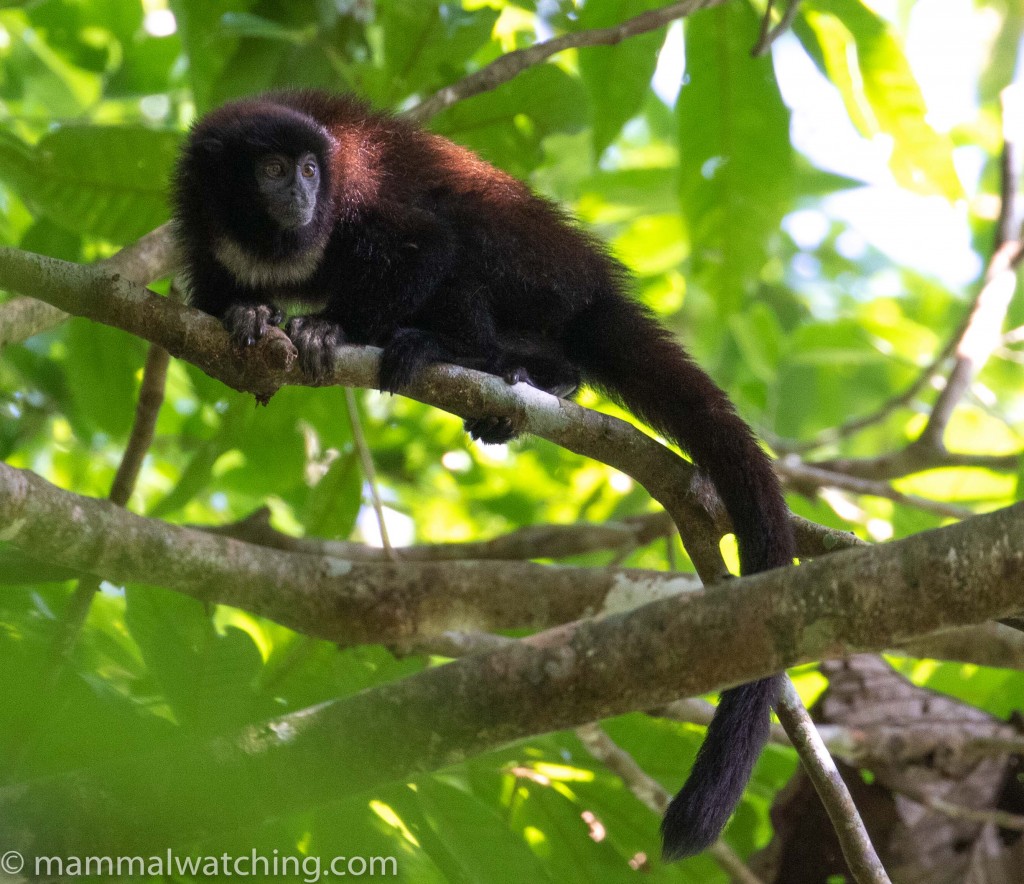
Colombian Black-handed Titi, Cheracebus medemi
Mocoa and Miraflor: three nights in January 2020.
In January 2020 I spent three nights in this area and saw Black-handed, Yellow-handed and Caquetá Titis, Brown (Tufted) Capuchins, Pygmy Marmosets, Lesson’s Saddleback Tamarins, Spix’s Night Monkeys, Ecuadorian Squirrel Monkeys, (Colombian) Woolly Monkey, a Crab-eating Raccoon, a Brown-throated Three-toed Sloth, and both Lesser and Greater White-lined Bats.
Community Reports
Primates: South & Central Colombia, 2023: Alex Schouten and Jeannette den Hertog with 20 species of primates including Brown Spider Monkey, Miller’s Saki and Golden-backed Uakari.
Colombia 2023: Romain Boquier, with Wild About Colombia, and 24 species including Mountain Tapir, 10 primate species and Pink River Dolphin.
Colombia, 2023: Jane Kempler with Wild About Colombia, 1 month & 38 species including Amazon Dwarf Squirrel, White-footed Tamarins, Little Red Brocket, Andean Bear, Olinguito and a Mountain Coati.
Colombia, 2023: Rob Jansen & Romy Jansen-Houtzager, 4 months & 554 species including Western Pygmy Marmoset, Golden-brown Uakari, Mountain Coati and Mountain Tapir.
Northern Oncilla near Medellin, 2023: Rob Jansen’s note about a currently reliable site for Northern Oncilla.
El Porvenir Reserve, Magdalena Medio, 2023: Stephen Bodenmann recommends visiting here.
Colombian Andes, 2022: Venkat Sankar, 2 weeks & 31 species including Spectacled Bear, Mountain Tapir, Olinguito, Brown Dwarf Hairy Porcupine, Panama Mouse Opossum and White-tailed Olalla Rat.
Mountain Tapir in Colombia, 2022: John & Karen Shrader, 1 week & 14 species including Brown Hairy Dwarf Porcupine, Olinguito and Mountain Tapir.
Santa Marta, Santander and Tatama National Park, 2022: Jim Vanderpoel, 2 weeks & species including Cotton-top Tamarin, Silvery-brown Bare-faced Tamarin and two dwarf squirrel species.
Parque Tayrona and El Dorado, 2022: Cheryl Antonucci, 1 week & 12 species including Cottontop and White-handed Tamarins, Santa Marta White-fronted Capuchin and Grey-handed Night Monkey.
Colombia, 2022: Justin Brown, 2 weeks & some nice mammals including Mountain Tapir, Mountain Coati and Brown Hairy Dwarf Porcupine.
South and Central Colombia, 2020: Jon Hall, 11 days and 53 species including Mottled-faced and Silvery Brown Tamarins, Brumback’s and Grey-handed Night Monkeys and Allen’s Olingo.
Colombia, 2019: Michael Kessler, 2.5 weeks and around 50 species including Tschudi’s Slender Opossum, Humboldt’s Big-eared Brown Bat, Mountain Coati and Crab-eating and Fish-eating Rats.
Colombia, 2018: Justin Brown, 3 weeks & about 30 species including 20 primates, with Golden-backed Uakaris, Mottle-faced and Bare-faced Tamarins and Caqueta Titis among the highlights.
Cottontop and White-handed Tamarins in Cartagena, 2017: Ignacio Yufera’s notes on these and other mammals in a city park.
Southern Colombia, 2016:Ottavio Janni’s notes on sites for Mountain Tapir and Caquetà Titi Monkey.
Colombia, 2015: Michael Kessler’s short note on a few sites visited during a botanical expedition, with species including Andean White-eared Opposum, White-footed and Cotton-top Tamarims and Lemurine Night Monkey.
Colombia, 2014: Torbjorn Lundqvist, 9 days & 8 species including Cotton-top Tamarin, Grey-handed Night Monkey and a Tayra.
Colombia, 2014: Hugh Buck and a month’s birding trip with 18 mammals including Andean White-eared Opossum, Brown Spider Monkey and a Santander Dwarf Squirrel.
Colombia, 2013: Stefan Lithner, 3 weeks & 14 species including White-footed Tamarin, Lemurine Night Monkey and Magdelena Water Rat.
Colombia Notes, 2008: Matt Miller, some notes of a month’s work in Colombia with trips to Los Llanos, Cartagena and Bogota.
Also See
Listen to Claudia Diaz talk about setting up ecotourism in Colombia on the mammalwatching podcast, August 2024
Putumayo, a primate paradise, February 2025
RFI: Colombia on a budget, February 2025
Northern Oncilla still showing well at Mirador El Roble, January 2025
Pacarana Quest (with some information but no sightings), January 2025
RFI Colombia guides, October 2024
First photos of a Colombian Weasel, June 2019
Mountain Tapir and Caquetà Titi Monkey in Southern Colombia, September 2016
RFI Pacarana and Shrew-Opossums (Bolivia, Colombia, Peru), October 2015
New Andes Cloud Forest Reserves to protect Silvery-Brown Bare-faced Tamarins, October 2015
Colombian Cats: Camera trap images of various felids from a ranch on Los Llanos, June 2012
Red Crested Tree-Rat rediscovered in northern Colombia, 2011
Resources
Bennett, S. 2003. Los Micos De Colombia (The Monkeys of Colombia) Panaericana Formas e Impresos SA. A useful guide to the confusing taxonomy of primates in the region. It is, of course, in Spanish.


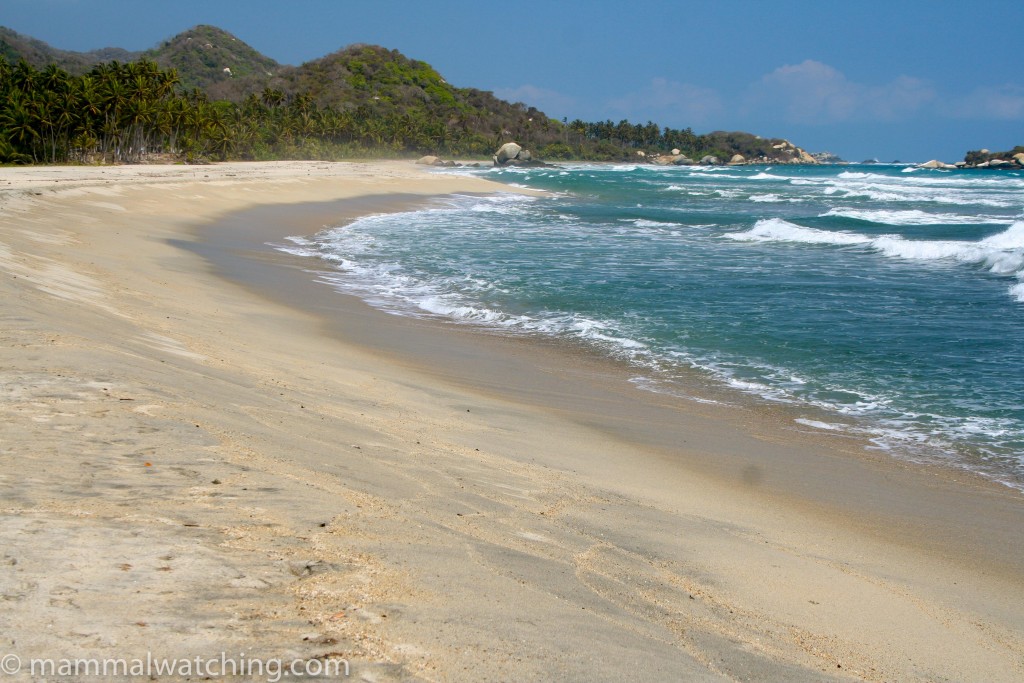
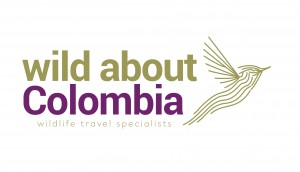
Leave a Reply
You must be logged in to post a comment.